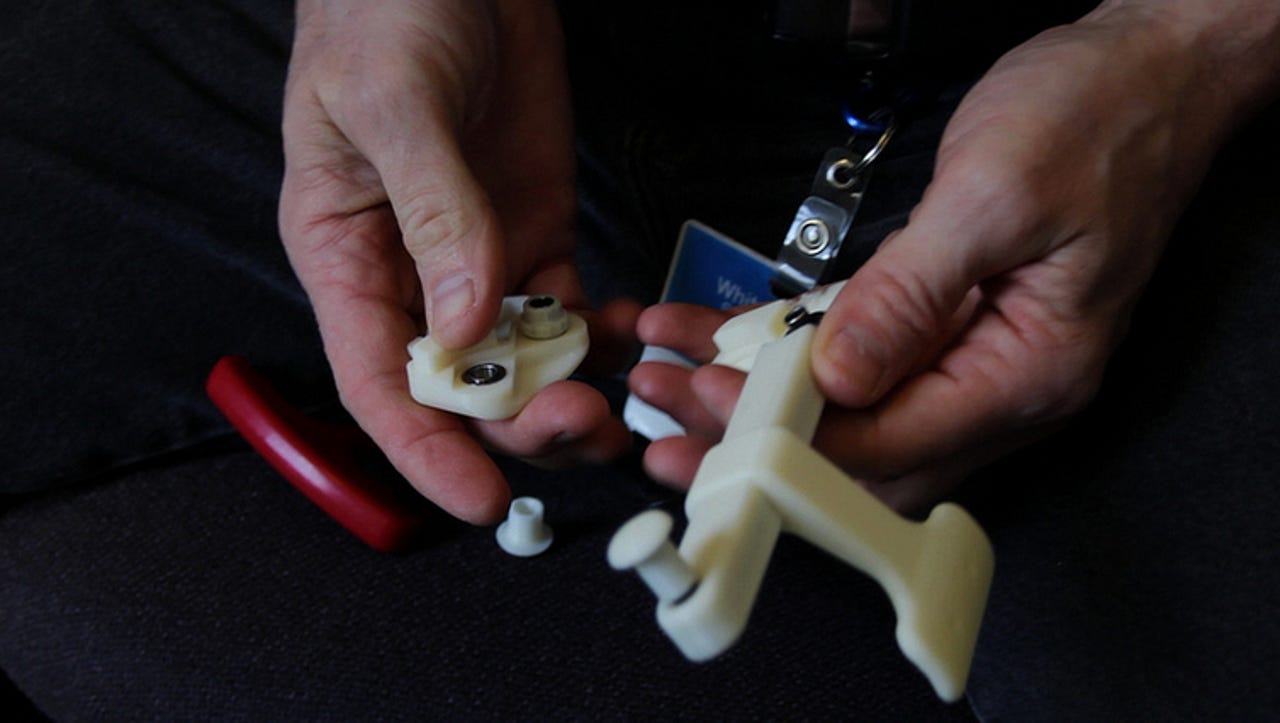Stratasys unveils new line to expand access to advanced 3D printing


Stratasys plans to launch a new range of 3D printers and materials, including new tools for food processing and the medical device industry.
Announced on Tuesday, the Rehovot, Israel-based firm said 11 high-performance 3D printers and additional materials will soon be available for purchase. Unveiled at EuroMold, Stratasys hopes the new product lines will allow clients to "improve their competitiveness and deliver high-end prototypes and manufactured parts with greater ease, speed and efficiency."
Updates and new capabilities being introduced in the new lines include:
- Triple-jetting technology, which allows users to build products with up to three base materials in a single run; Up to 20 percent faster FDM production system times;
- 3D tools for food processing and steam sterilization of medical devices;
- ULTEM 1010 FDM material capabilities, which give aerospace and automotive clients access to enhanced speed, toughness and chemical resistance;
- Increased material versatility, including 12 3D printing materials at the desktop level;
- Faster, more productive hands-free operation.
Stratasys has included six new PolyJet-based 3D printers in the lineup, which makes triple-jetting technology accessible cross-platform. The new printers equipped with this technology are the office-friendly Objet260 Connex 1, 2 and 3, and the Objet350 Connex 1, 2 and 3, which are suitable for larger build sizes.
The Fortus 450mc and Fortus 380mc are two new 3D production systems, designed for high-performance prototyping and production tooling in a variety of standard and engineering thermoplastics.
In addition, a new desktop 3D printer, the Objet30 Prime Desktop 3D Printer, has been launched with consumer products in mind. The printer offers 12 material options, two standard build modes and "draft mode," which can be used to quickly test and build prototype concepts.
Finally, Stratasys unveiled the Objet Eden260VS 3D Printer for clients who require cost-effective prototyping for assembled parts with delicate features — such as dental and medical applications— and the ULTEM 1010 resin, which improves heat resistance, strength and chemical resistance for aerospace, automotive, food production tooling, and medical device manufacture.
Gilad Yron, senior vice president of Product Management at Stratasys commented:
The global design and manufacturing market continues to push toward creating smarter products with greater efficiency. Because we believe in, and support this trend, we have announced today a range of solutions that focus on 'democratizing design.' Our customers, whatever their size or industry, can now access a wide spectrum of cutting-edge 3D printing capabilities and deliver competitive advantage.
We invite every designer and manufacturer at this year’s EuroMold to visit one of our three booths to see how 3D printing is shaping the way we manufacture.
Last week, Hewlett-Packard unveiled plans to enter the 3D printing market. Despite facing stiff competition from the likes of Stratasys and 3D Systems, HP hopes to lure clients through the firm's Multi Jet Fusion 3D print technology, which uses thermal jet techniques and fusion agents to layer printed items, rather than using lasers or printing by point.
HP plans to enter the market in 2016, and hopes to create an open ecosystem for the industry ahead of its launch.
See also: HP to enter 3D printing market in 2016: Will customers wait?
Stratasys CEO David Reis welcomed the news, insofar that a major tech firm entering the fray "endorses an industry that's a relatively small industry," and HP joining the 3D printing realm "will increase awareness of what we're doing."
According to research firm Gartner, 3D printer expenditure will rise from $1.6 billion next year to $13.4 billion in 2018.
Read on: In the world of innovation